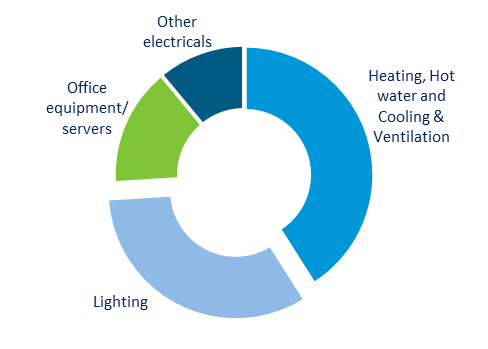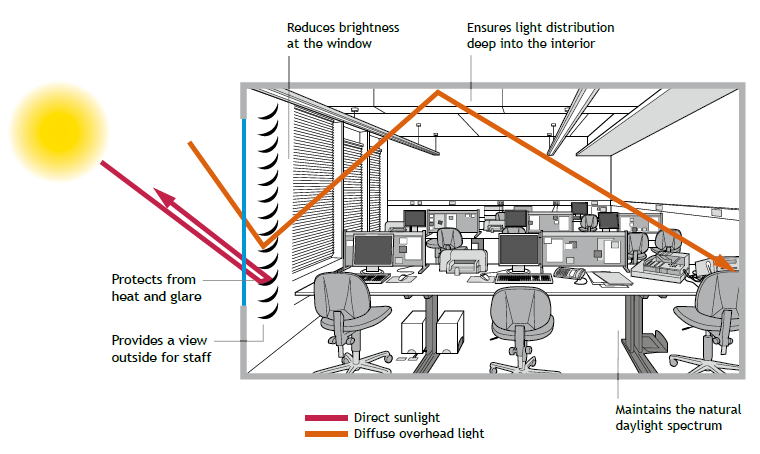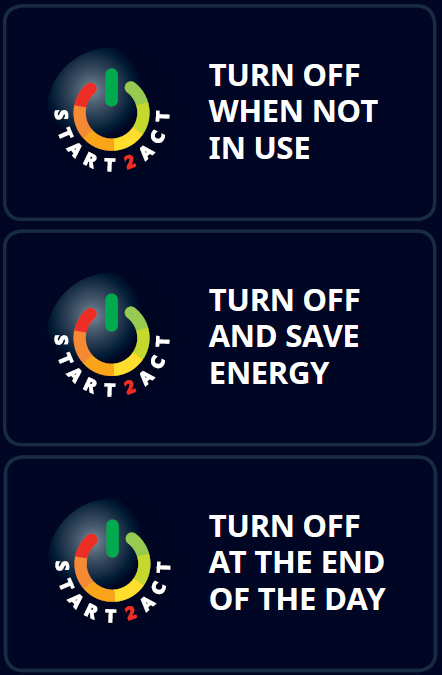Lighting accounts for around a third of the energy use of a typical office.
Introduction
Lighting is something that most of us take for granted, but it makes up one third of the energy use in a typical office. Don’t wait until your company upgrades to LEDs – there are plenty of simple no cost changes that you and your colleagues can make straight away to reduce your lighting energy use.

Recommendations
- Always turn off the light when you leave a room: Unnecessary lighting usage wastes energy and money. Forgetting to turn off the light once may only have a small impact, but the impact quickly grows when they are regularly left on. If you make a habit of turning them off you may find that your colleagues follow your lead, doubling your impact.
- Use natural daylight as much as possible: Daylight is free and zero carbon, yet in offices with lots of natural daylight it’s common to see the lights on when there is more than enough light. Switch them off when they’re not needed. Where blinds are used to reduce glare, try adjusting them so that they reduce direct sunlight but still let in enough daylight to allow the electric lights to be switched off.
- Use enough light for you: When working alone, consider whether the entire room needs to be lit or whether a small task light will suffice. If this happens regularly but you cannot control the lights, speak to your manager about getting a task light.
- Find the switch: Many people don’t switch lights off because they don’t know which switch controls which light. It’s very important that big banks of light switches are accurately labelled - ask your manager if you can label them to help you and other staff remember.

The benefits of daylight blinds
Additional Information
If you already think you’re doing enough to save energy through lighting, ask your manager to consider the following options to see even greater energy savings.
No cost – organise a switch off campaign
Ask your manager to label light switches and print posters to help you and your colleagues to reduce energy use. You can help with this by volunteering to commit time to the campaign, and encouraging colleagues to follow your lead. It is especially important that the person who is last to leave the office knows that they have to turn off all of the lights before they leave. This may be you or one of your colleagues, or it may be the office cleaners.

START2ACT stickers
Low cost – implement a maintenance schedule
Look at the windows and light fittings in your office – are they clean? Without regular maintenance light levels can fall by up to 30% in 2-3 years, leading to more lights being turned on to compensate. Simply cleaning windows, skylights and the glass or plastic covering in front of light fittings can make your office a much nicer place to work, and save energy at the same time.
Medium cost – invest in lighting controls
Lighting controls can automate lighting in your office to reduce energy waste, by eliminating the risk of forgetting to turn off the lights! A passive infra-red (PIR) movement sensor can cost as little as £40, so installing them in infrequently-used areas such as meeting rooms, storerooms and bathrooms can quickly pay back the investment. Light fittings closest to the windows can be fitted with daylight/photocell sensors, which automatically turn off or dim the lights when there is enough daylight to light the space.
High cost – invest in efficient lighting
If your company is able to invest in upgrading to LEDs, you could reduce lighting energy consumption by up to 70% when combined with improved lighting controls. There are lots of options available for lighting upgrades, so it’s best to get a full lighting design from a lighting specialist to ensure your lighting requirements are adequately met and you have an accurate assessment of potential cost and carbon savings.
Your manager can see more information on these investment opportunities here. [Link to lighting manager page]






